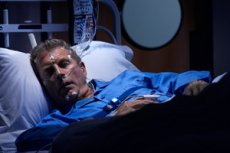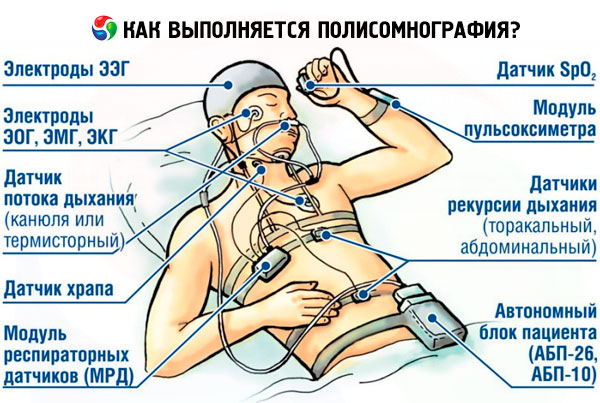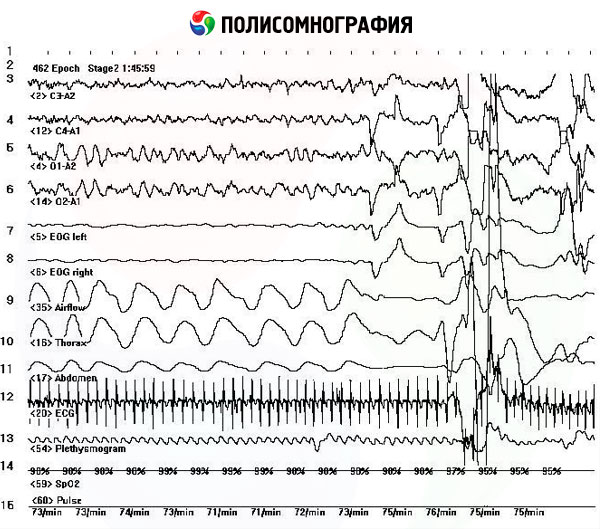Medical expert of the article
New publications
Polysomnography
Last reviewed: 06.07.2025

All iLive content is medically reviewed or fact checked to ensure as much factual accuracy as possible.
We have strict sourcing guidelines and only link to reputable media sites, academic research institutions and, whenever possible, medically peer reviewed studies. Note that the numbers in parentheses ([1], [2], etc.) are clickable links to these studies.
If you feel that any of our content is inaccurate, out-of-date, or otherwise questionable, please select it and press Ctrl + Enter.

Indications and contraindications for polysomnography
Today, indications for polysomnography include a wide range of somnological pathologies, in particular:
- insomnia of various etiologies;
- sleep apnea (disordered breathing during sleep) or obstructive sleep apnea-hypopnea syndrome;
- snoring;
- enuresis (nighttime urinary incontinence);
- idiopathic hypersomnia (increased duration of night sleep);
- narcolepsy (excessive daytime sleepiness);
- periodic movement disorders during sleep ( restless legs syndrome );
- parasomnias (somnambulism, sleep talking);
- sleep disorders in somatic, neurological and endocrine diseases.
This diagnostic method is the only way to detect such respiratory disorders during sleep as apnea and hypopnea, which are often accompanied by snoring. People with such pathology develop chronic oxygen deficiency of the brain and heart, which leads to serious diseases: ischemic heart disease and central cerebral ischemia.
According to neurologists, there are practically no contraindications to polysomnography.
How is polysomnography performed?
Polysomnographic examination is carried out during night sleep, so the patient must come in the evening (after 8-9 pm) to the somnology laboratory (or a specially designated room) of the clinic that performs this type of diagnostics and has the appropriate equipment and specialists.

Before going to bed, the patient is connected to all recording devices using electrode sensors (about two dozen), which are placed on the surface of the skin in various places so that all neurophysiological processes occurring during sleep can be recorded.
Thus, during the night the following are monitored and recorded:
- bioelectrical activity of the brain ( electroencephalogram );
- heart rate and force of contractions ( electrocardiogram );
- blood oxygen level (peripheral pulse oximetry);
- intensity of respiratory movements of the chest (electroplethysmography);
- volumetric flow rate of air exhaled through the nose (breathing rate is measured by pressure sensors);
- body position and motor activity (video monitoring and myogram taken from the tibial muscles of the anterior thigh);
- condition of the chin muscles (electromyogram);
- eye movements during sleep (electrooculogram);
- snoring (its frequency and duration are recorded from a sound sensor placed in the neck area).
What does polysomnography provide in terms of sleep disorder diagnostics? Recording and analysis of neurophysiological changes occurring during sleep, recorded by equipment, allows specialists to construct a hypnogram – a computer graph of sleep phases and cycles, which – when compared with standard age indicators – reveals certain deviations in the patient’s sleep characteristics. And this provides objective grounds for making a correct diagnosis.
For obvious reasons, the price of polysomnography is not indicated on the websites of clinics and diagnostic centers: to obtain specific data, you should contact the medical institution directly.

And according to the reviews of polysomnography left by patients of these institutions, the perception of the seriousness of sleep problems and understanding of their negative impact on health has not yet reached the required level. And it is not easy for a person covered with sensors to fall asleep...


 [
[